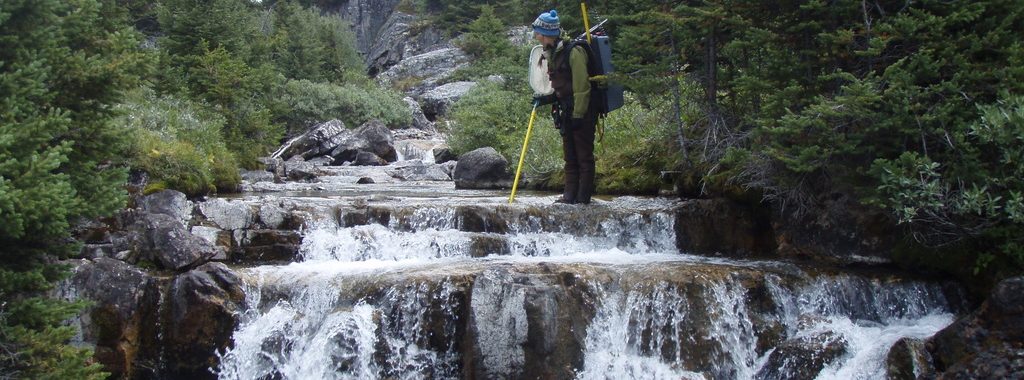Thesis Title: Habitat use by fluvial Arctic Grayling (Thymallus arcticus) across life stages in northern mountain streams.
Author: Morag McPherson
Abstract
Northern aquatic ecosystems face increasing pressures from climate change and natural resource development, raising conservation concerns for species in these understudied regions. The Arctic Grayling (Thymallus arcticus) is a widely distributed, but sensitive, northern freshwater fish that is a good indicator of general aquatic health. In the Northwest Territories (NWT), there has been little focus on studying riverine Arctic Grayling populations or their use of stream habitats within mountain river watersheds. The purpose of my research is to characterize fluvial Arctic Grayling distribution among mountain streams in the NWT, and to determine habitat characteristics and ecological factors that influence Arctic Grayling habitat use across life stages. Sampling sites (n=183) were selected in four sub-basins within the Little Nahanni River watershed in the southwest NWT. In the summer of 2015, each site (100 meters in length) was electrofished and stream habitat parameters were measured. Arctic Grayling were collected for biological analyses of age, size, weight, and reproductive development. Results showed shifts in Arctic Grayling development by size and age class that corresponded with shifts in distribution observed across the study streams. From these findings, four distinct post-emergence life stages for Arctic Grayling were identified: young-of-year (YOY), juvenile, sub-adult and adult. Step-wise logistic regression was used to explore the relationship between the occurrence of Arctic Grayling life stages and stream habitat characteristics. Multivariate regression tree (MRT) analysis was used to identify environmental thresholds and habitat-based life stage segregation, and redundancy analysis (RDA) was used to determine potential life stage-specific habitat correlations. Differences emerged in how Arctic Grayling life stages use habitat across a range of available stream conditions. YOY Arctic Grayling were found exclusively in low elevation, low gradient habitat dominated by silty-sand substrate with average water temperatures >10oC. Similarly, juvenile Arctic Grayling occupied low elevation, warm water stream habitat, but associated strongly with run habitats, as well as showing movement towards cooler water temperatures and more riffle dominated habitats. Sub-adult Arctic Grayling used the widest range of habitats across the study area, being found at a range of elevations and water temperatures, demonstrating the ability of this life stage to use a diversity of available habitats. Sub-adults showed a relationship to in-stream riffle, pool, and cascade-boulder habitats. Adults had a strong correlation to elevation and water temperature, using habitats with high elevation (>1200 m) and low temperature (7oC), and increased proportions of pool and boulder habitat. The four sub-watersheds studied provided distinct stream habitats and Arctic Grayling life stages separated across the habitat types, advancing our understanding of the life cycle habitat requirements for fluvial populations in mountain systems. It provides insight on the important and potential limiting factors, such as availability of warm water habitats, to population success in cold regions. The dynamic nature of Arctic Grayling habitat use in mountain streams highlights the need to consider habitat complexes at the watershed scale when defining species life stage requirements, managing habitats, monitoring populations, and assessing potential impacts into the future. Improved understanding of the distribution, habitat requirements and ecology of different life history types and life stages of Arctic Grayling is crucial for the effective management and monitoring of this species in northern environments

